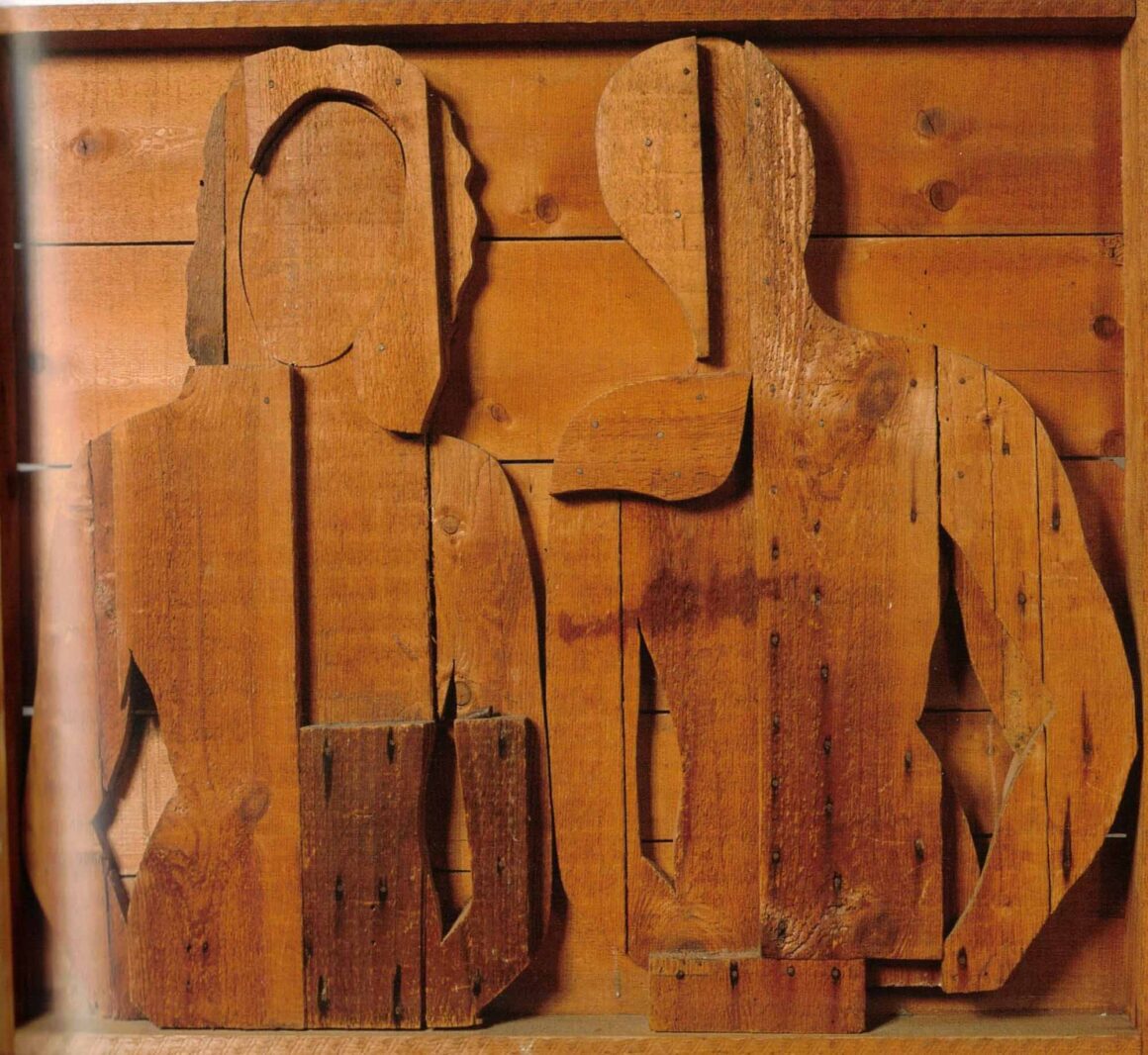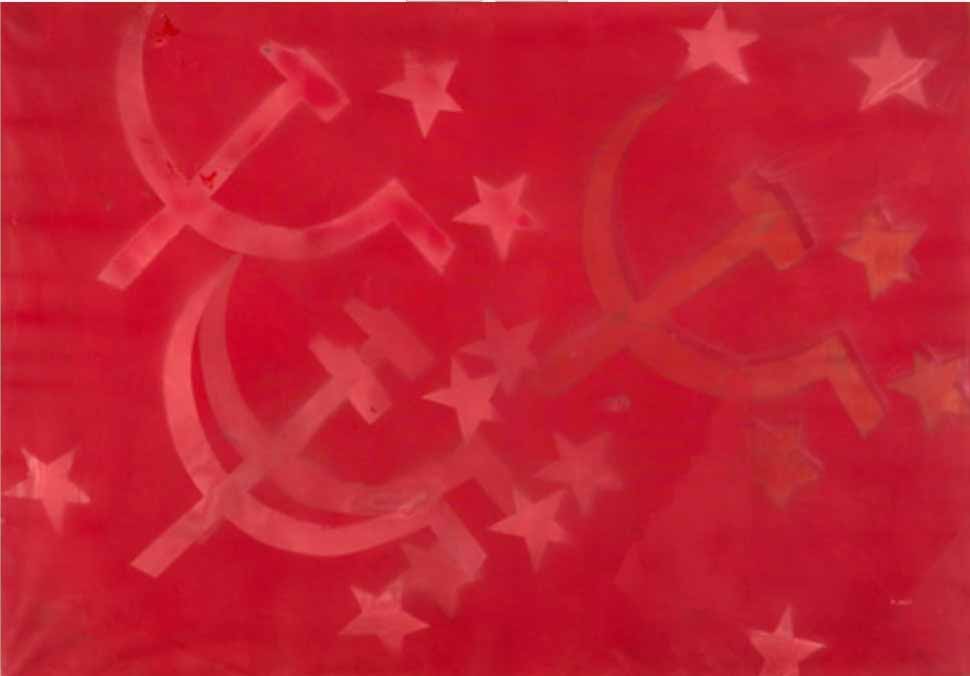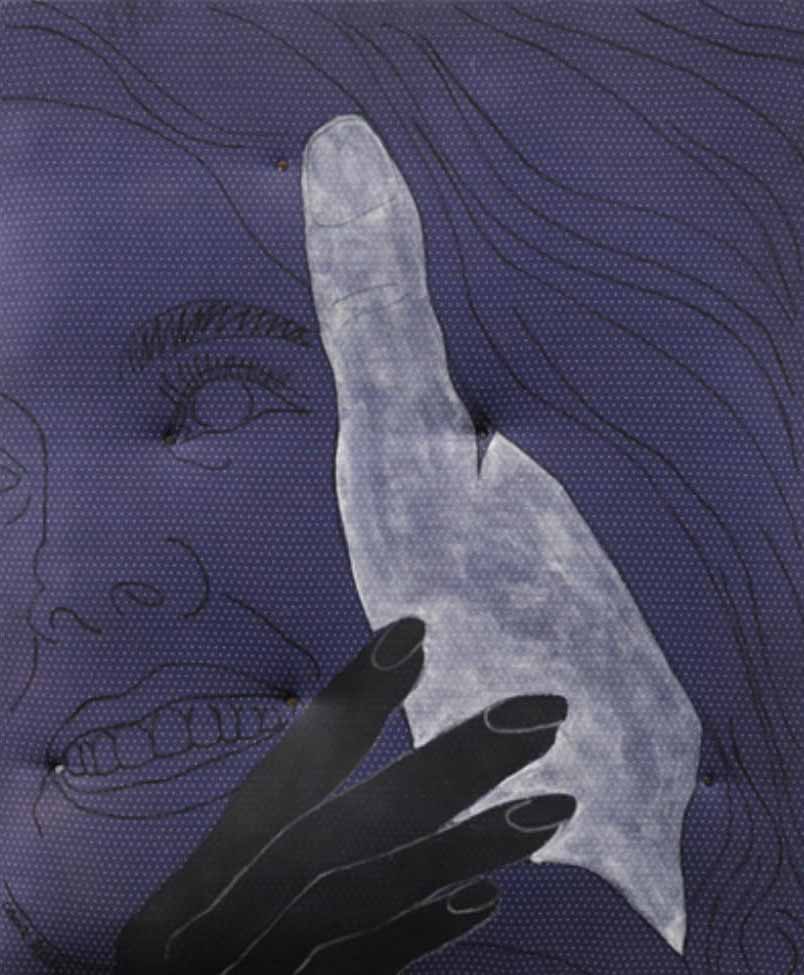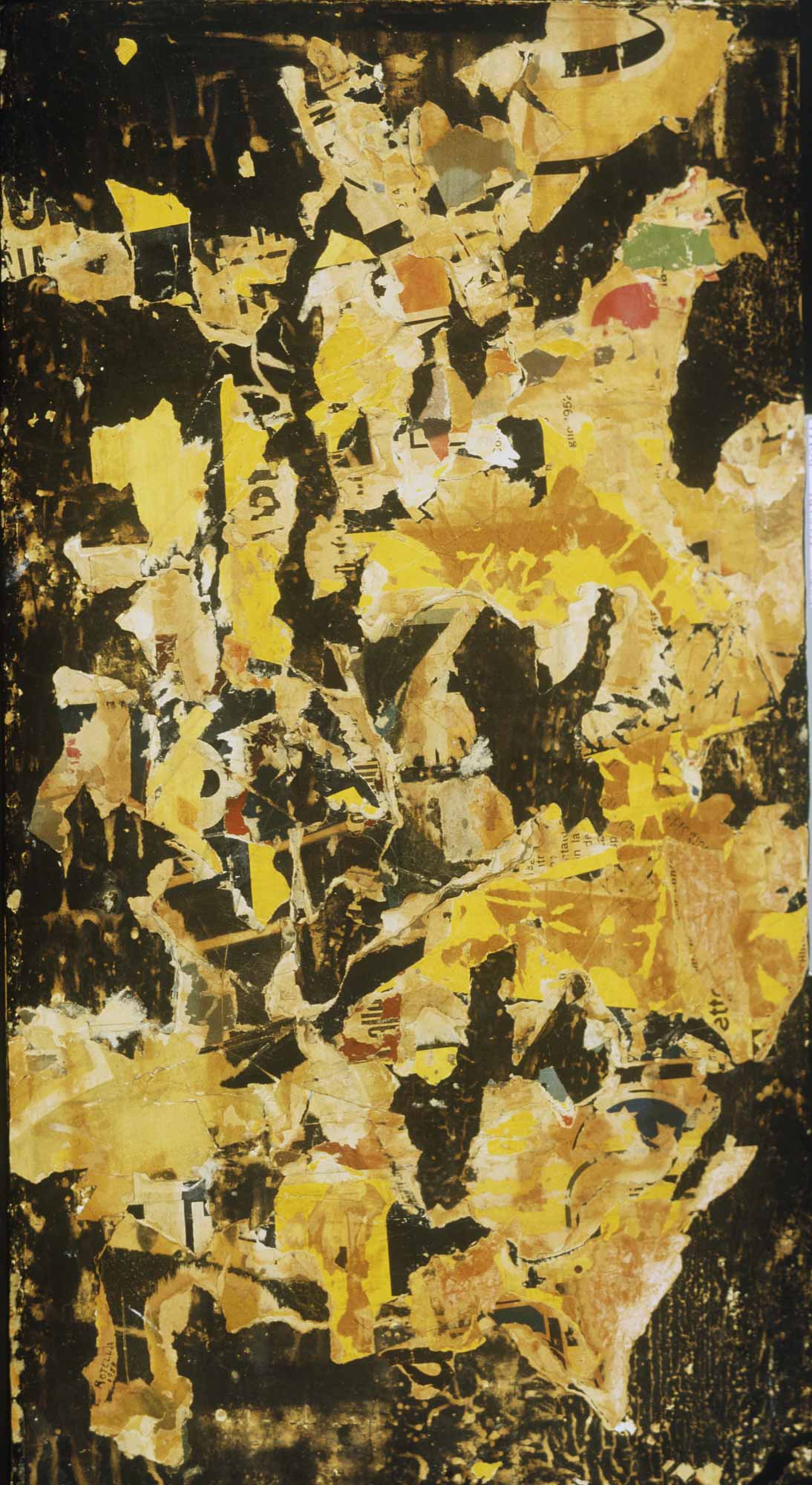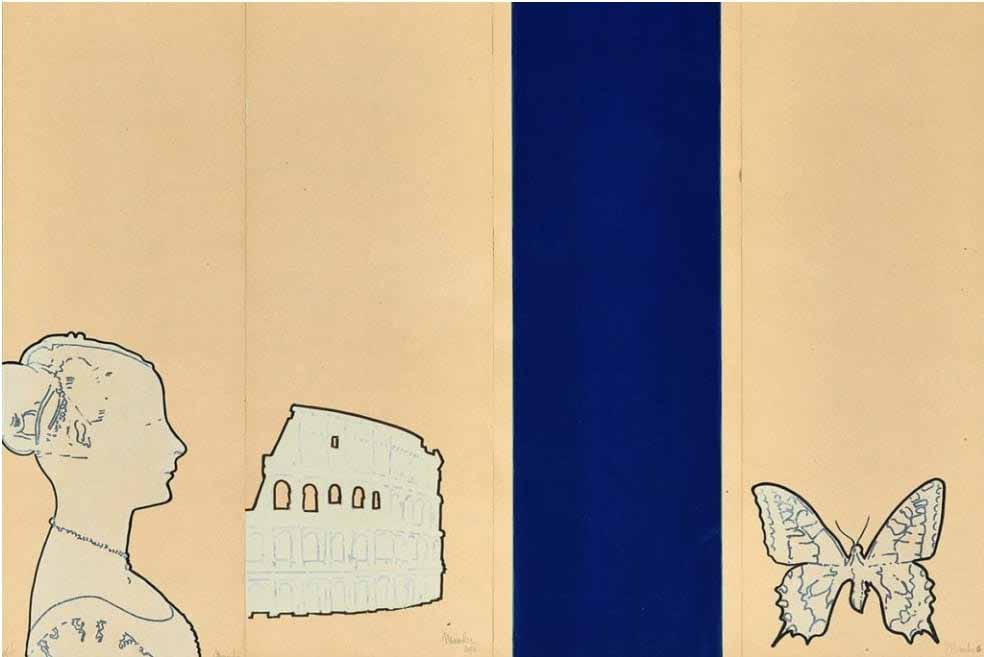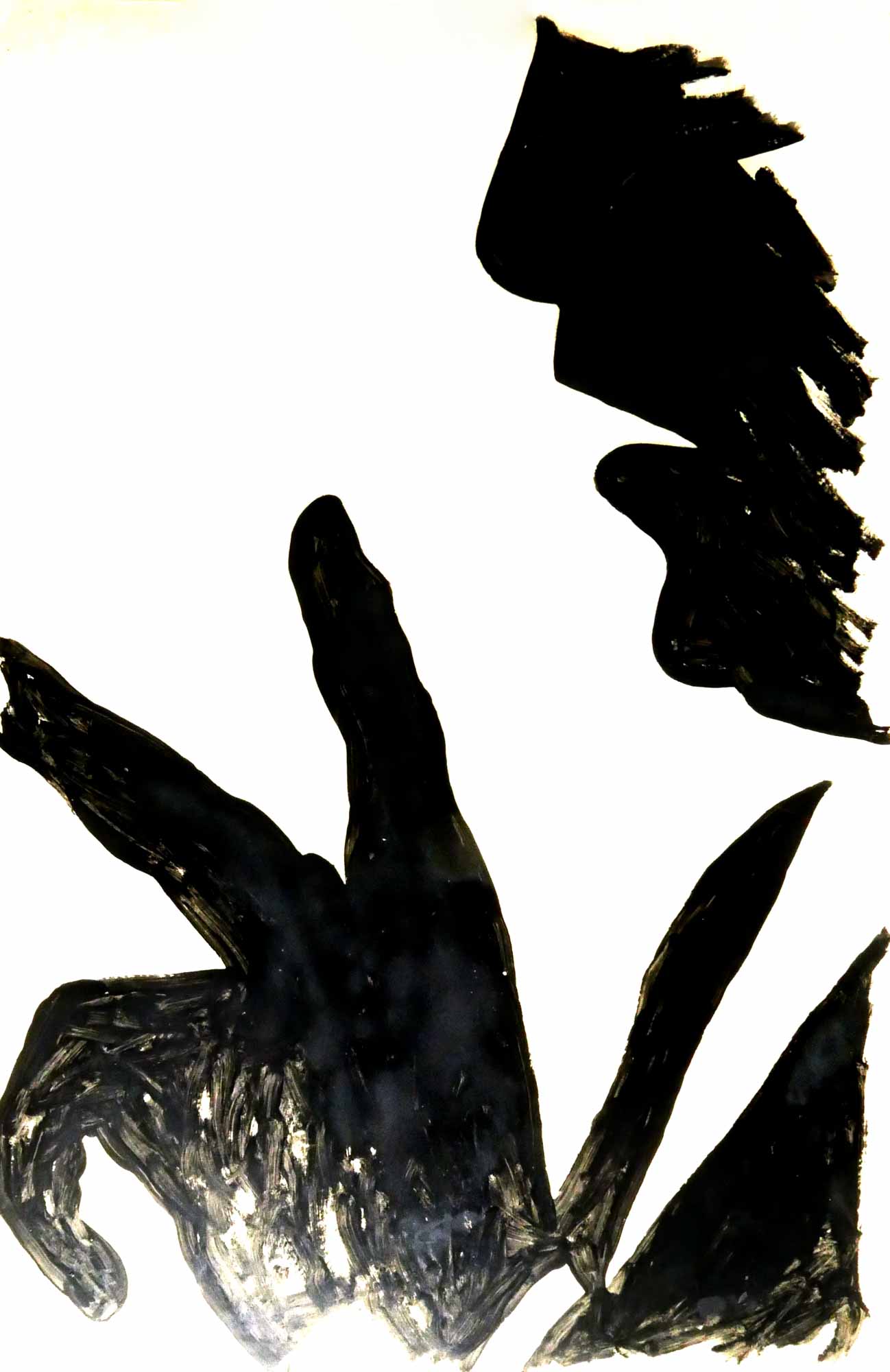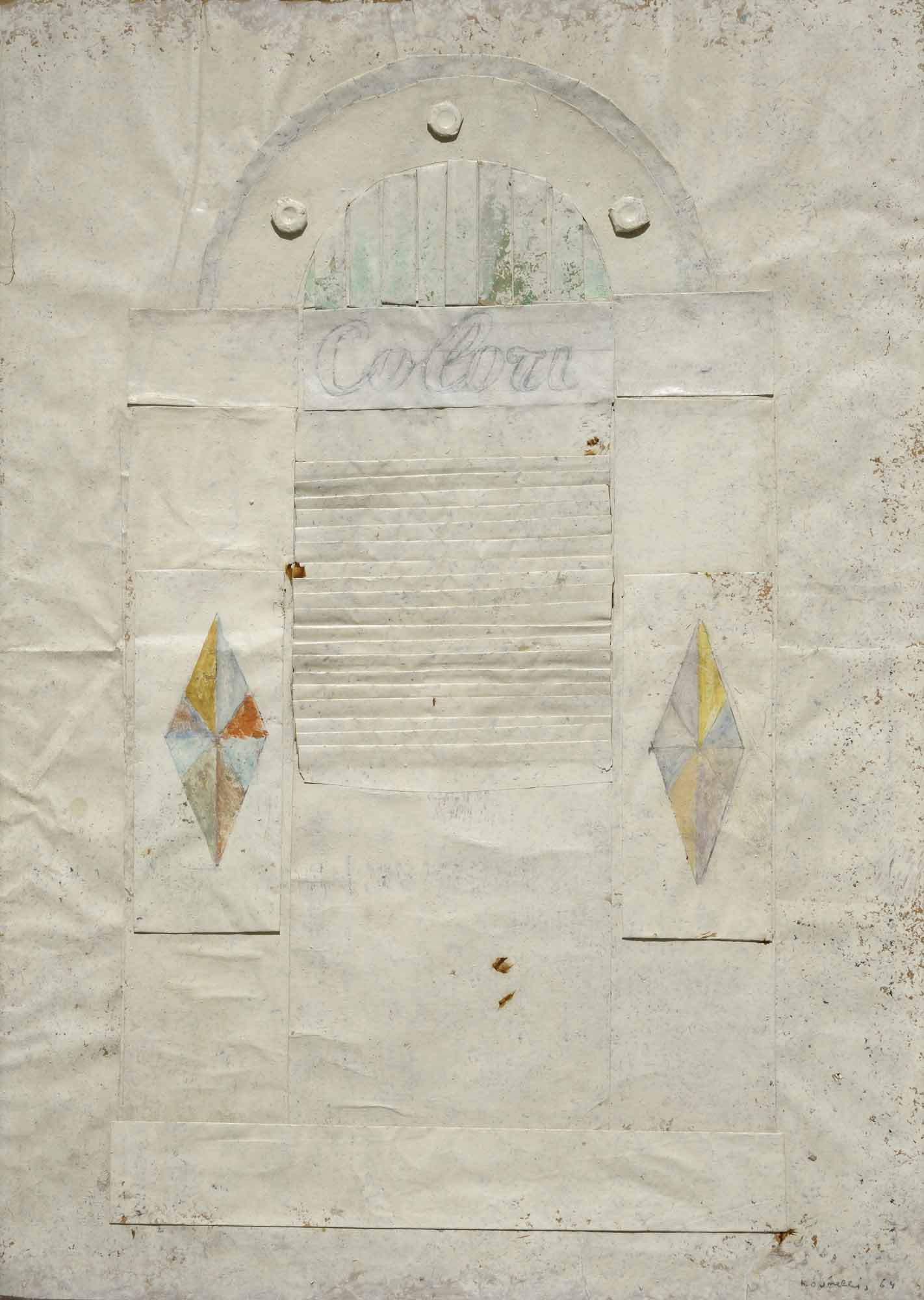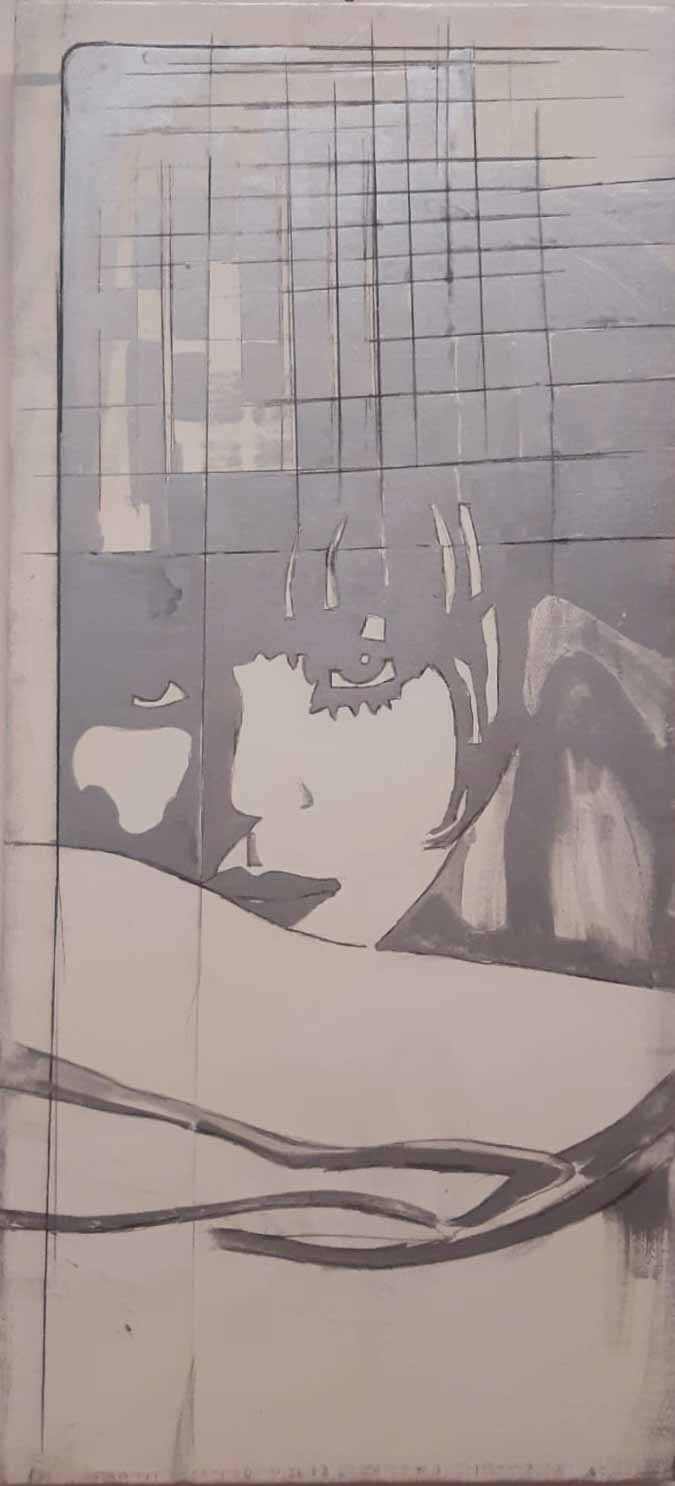Suspended between history and legend, the Scuola di Piazza del Popolo was not a close-knit group: many of its ‘exponents’ were fortunately so undisciplined and unconventional as to barely tolerate, due to their mental constitution, the very idea of ‘school’ in all respects. Nevertheless this definition of group works well, even more so today in the culture of quick and short slogans and tweets”. In the magic sixties, the centre of Rome was undoubtedly Piazza del Popolo, with ‘Caffè Rosati ‘where you couldn’t help but go” to quote (Cesare Vivaldi) and the electrifying presence of La Tartaruga di Plinio de Martiis Gallery, just above Rosati.
Everything happened between this Piazza and the so-called ‘Tridente’ the triangular-shaped area of the city concentrated around Via del Babuino, Via del Corso, and Via di Ripetta, with a fourth spike constituted by Via Margutta, where this compact but rich exhibition titled ‘The Scuola di Piazza del Popolo. Pop or non-Pop?’, presented by Monogramma Arte Contemporanea, curated by Gabriele Simongini with the organizational coordination of Giovanni Morabito and Associazione med’eventi. The exhibition, which opened on the 28th of May 2021 and will stay open for one month, was promoted by Fondazione Terzo Pilastro – Internazionale, chaired by Professor Emmanuele F. M. Emanuele, and accomplished with the contribution of Fondazione Cultura e Arte.
The artists represented by their works from the nineteen sixties are Franco Angeli, Mario Ceroli, Tano Festa, Giosetta Fioroni, Jannis Kounellis, Sergio Lombardo, Francesco Lo Savio, Renato Mambor, Pino Pascali, Mimmo Rotella, Mario Schifano and Cesare Tacchi.
As the title of the exhibition- produced per exempla - says, it is right to question the innovative contribution brought by these artists to the international environment, with a powerful originality that even anticipated some of the results of American Pop Art, although it has such a marked identity that it may not be reduced to the sketchy definition of Italian Pop Art. The historic centre was so full of meetings and creative events that it made Rome a capital of international art and a specific peculiarity of the Scuola di Piazza del Popolo owed a lot to Cinecittà, the dream film industry that came from a suburb at the centre of the world (to use an oxymoron). The U.S.A. had Hollywood and Pop Art and, not to be outdone, we had Cinecittà and the Scuola di Piazza del Popolo.
Professor Emanuele, Chair of Fondazione Terzo Pilastro – Internazionale, affirmed “Artists such as Schifano, Angeli, Festa and Mambor, with whom I associated at the time, undoubtedly revolutionised the visual art scene, denying their alleged filiation with American Pop Art, which they viewed as sheer cultural enrichment because they actually preferred to be inspired by the uniqueness and antiquity of Italian monumental art, including futurism and metaphysical art. They were also highly influenced by the film industry which in the golden age of the cinema was the driving force of the local economy due to the awesome film productions shot in Cinecittà to which we owe the so-called Roman Dolce Vita. The experiments and innovations that the artists of the Scuola di Piazza del Poplolo almost unknowingly brought, represented a cultural breakthrough (not only in Italy) that indelibly marked an era, of which I frankly have never found traces of the offspring in later times.”

